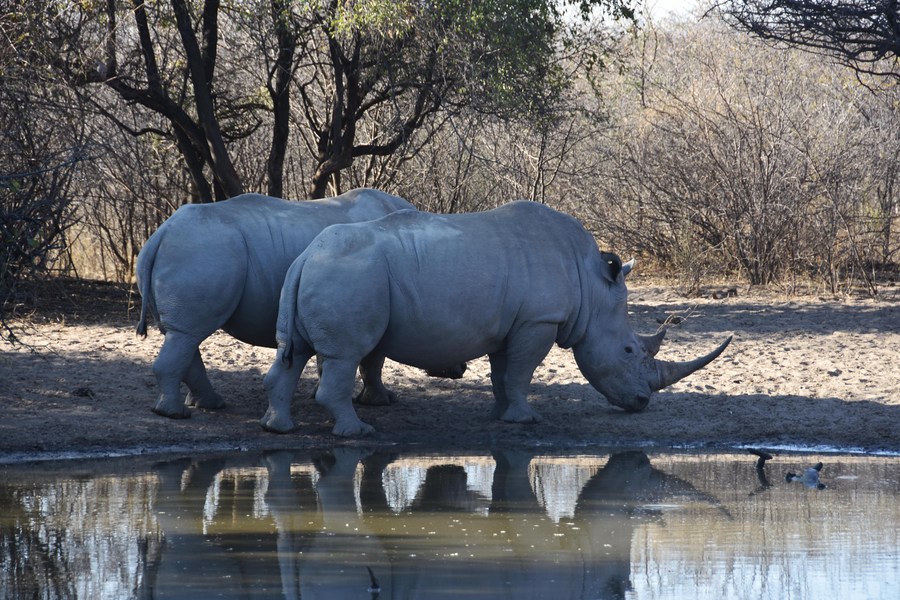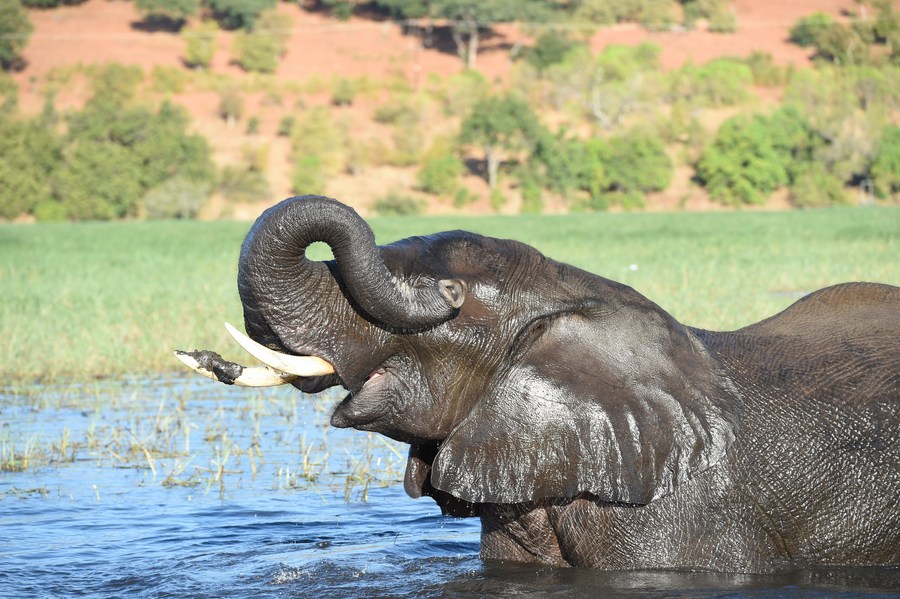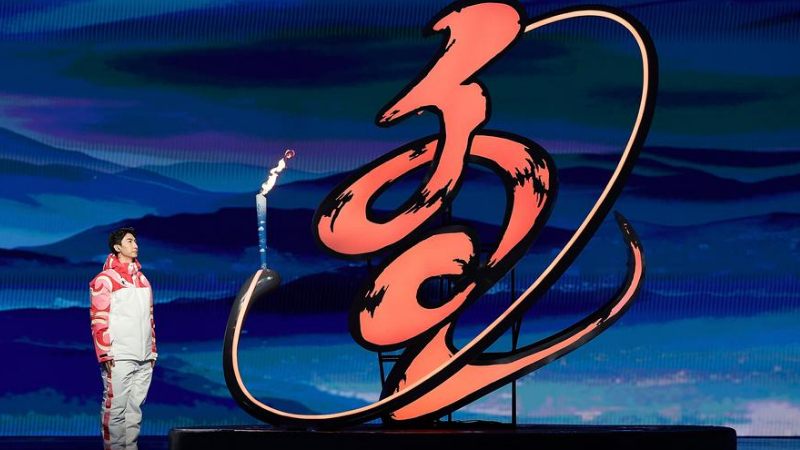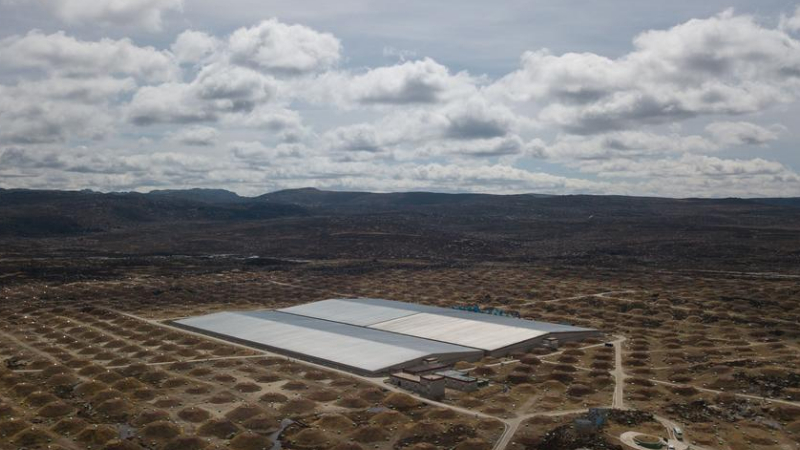
White rhinos are pictured at the Khama Rhino Sanctuary in Serowe, Botswana, on July 28, 2023. (Xinhua/Teng Junwei)
Wild animals in the wildlife-rich northern part of Botswana are suffering severely, with some dying, as longer droughts in the southern African country take a toll on wildlife.
GABORONE, Feb. 28 (Xinhua) -- Wild animals in the wildlife-rich northern part of Botswana are suffering severely, with some dying, as longer droughts in the southern African country take a toll on wildlife.
Grace Muzila, the permanent secretary of the Ministry of Environment and Tourism, said that in her office in the capital city of Botswana, Gaborone, she has received regular reports of anguish this year from the country's national parks.
Climate change-induced drought conditions have forced elephants, lions, buffaloes, baboons, and other wild animals to travel long distances in search of water and food, Muzila said.
While it is natural for wild animals to die, Muzila expressed concern that they are perishing at a young age due to starvation, thirst and exhaustion after traveling long distances in search of sustenance.
"Wild animals get stuck in the mud desperately looking for water and they die. The experience is heartbreaking," said Muzila, adding that Botswana lost at least 300 elephants in mysterious circumstances in 2023 alone.

An elephant is seen in the Chobe River in northwest Botswana's Kasane, May 10, 2021. (Photo by Tshekiso Tebalo/Xinhua)
Muzila said that wildlife authorities began compiling statistics in November 2023 on lions, buffaloes, baboons, and other wild animals that succumbed to the devastating impact of prolonged droughts until May this year.
John Steglin, a senior meteorologist at the Department of Meteorological Services in Botswana, said the dry spells are becoming longer and more severe in this landlocked southern African country. Steglin said that Botswana's rainy season, which ran reliably from October to March for decades, has become erratic in recent years, sometimes starting only in December with no guarantee of consistency.
"Climate change is turning out to be our biggest challenge," Steglin said, adding that the weather patterns have become unpredictable, leaving animals in the national parks with no food or water.
"Right now, we are in February, and there should be incessant rainfall to provide the much-needed moisture for the plants to effectively reach the maturity stage. However, the rest of the country has been receiving less than 10 mm of rainfall per event," he said.
Some areas have been experiencing above-normal rainfall, causing extensive damage to infrastructure such as schools, houses and bridges.
Across Africa's national parks, similar effects of climate change are being felt, with multiple studies showing that extreme weather events are leading to the loss of plants and animals, which struggle to cope with longer dry spells and hotter temperatures.
In light of this, Botswana is seeking to accelerate its green transition by fostering the use of solar energy, as mentioned by Peggy Serame, Botswana's minister of finance, when announcing a budget proposal of 10.28 billion U.S. dollars earlier this month.
Serame told lawmakers that the economy has become highly vulnerable to climate change, which mainly affects the agricultural and tourism sectors. She emphasized the need for urgent and targeted responses.
She proposed a development budget of 1.37 billion pula (about 100 million U.S. dollars) to augment existing donor funds to enhance economic resilience and protect livelihoods, especially for the most vulnerable. ■











